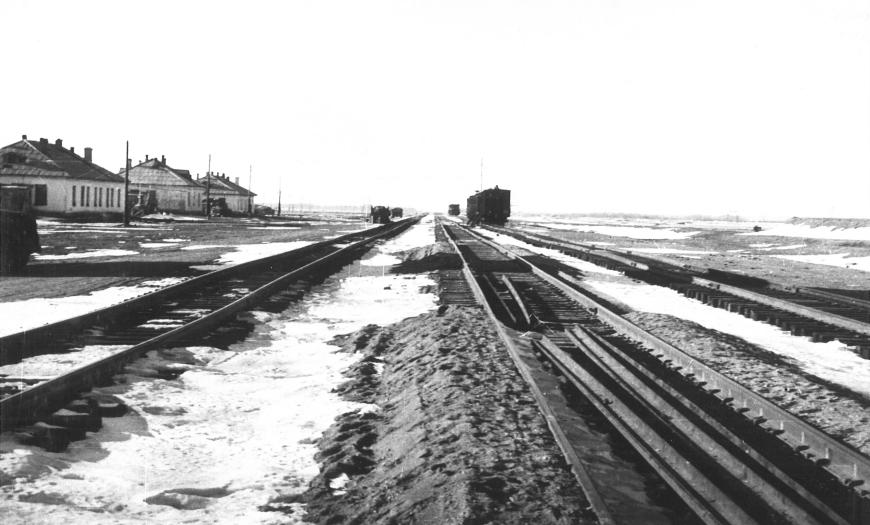In 1954, a large-scale development of virgin and fallow lands began in the Kazakh SSR and a number of adjacent regions. The Council of Ministers of the USSR adopted a Resolution on the construction of railway lines in the region, the design of most of which was entrusted to Lengiprotrans.
As part of this, the institute has developed a project for the railway Kostanay (now Kostanay) - Uritskoye - Peski - Volodarskoye - Kokchetav (now Kokshetau). The road was designed as a narrow-gauge one. The design and survey work had a tight deadline.
At the end of 1954, preliminary and final surveys were carried out at the end sections of the route: Kustanai - Uritskoe (142 km) and Volodarskoe - Kokchetav (114 km). Construction began in the same year.
In the spring of 1955, both sections were approved by the Ministry of Railways (MPS). From May to June 1955, additional surveys were carried out at certain sections of the Kostanay - Uritskoye line to reduce the steering slope from 9% to 6%.
In August 1955, a temporary movement was opened on the plots, which made it possible to deliver agricultural machinery to the beginning of the harvest.
At the end of 1954, preliminary surveys were carried out on the central sections of the Uritskoye - Peski (84 km) and Peski - Volodarskoye (90 km) route. Final surveys were carried out from May to October 1955.
In August 1955, the Council of Ministers of the USSR made a decision to build a wide gauge railway on these sections. In this regard, new working drawings were prepared in the shortest possible time. In November 1955, the project was approved by the Ministry of Railways. Both lines were completed and commissioned.
Subsequently, the entire line entered the western part of the Central Siberian Railway. The construction of the sections Kustanai - Uritskoye and Volodarskoye - Kokchetav dragged on, they were completed only in the 1970s with reorganization to a wide track.
Central Siberian Railway
Author's department:
Project Status:
Latitudinal highway for the development of virgin lands in Kazakhstan


